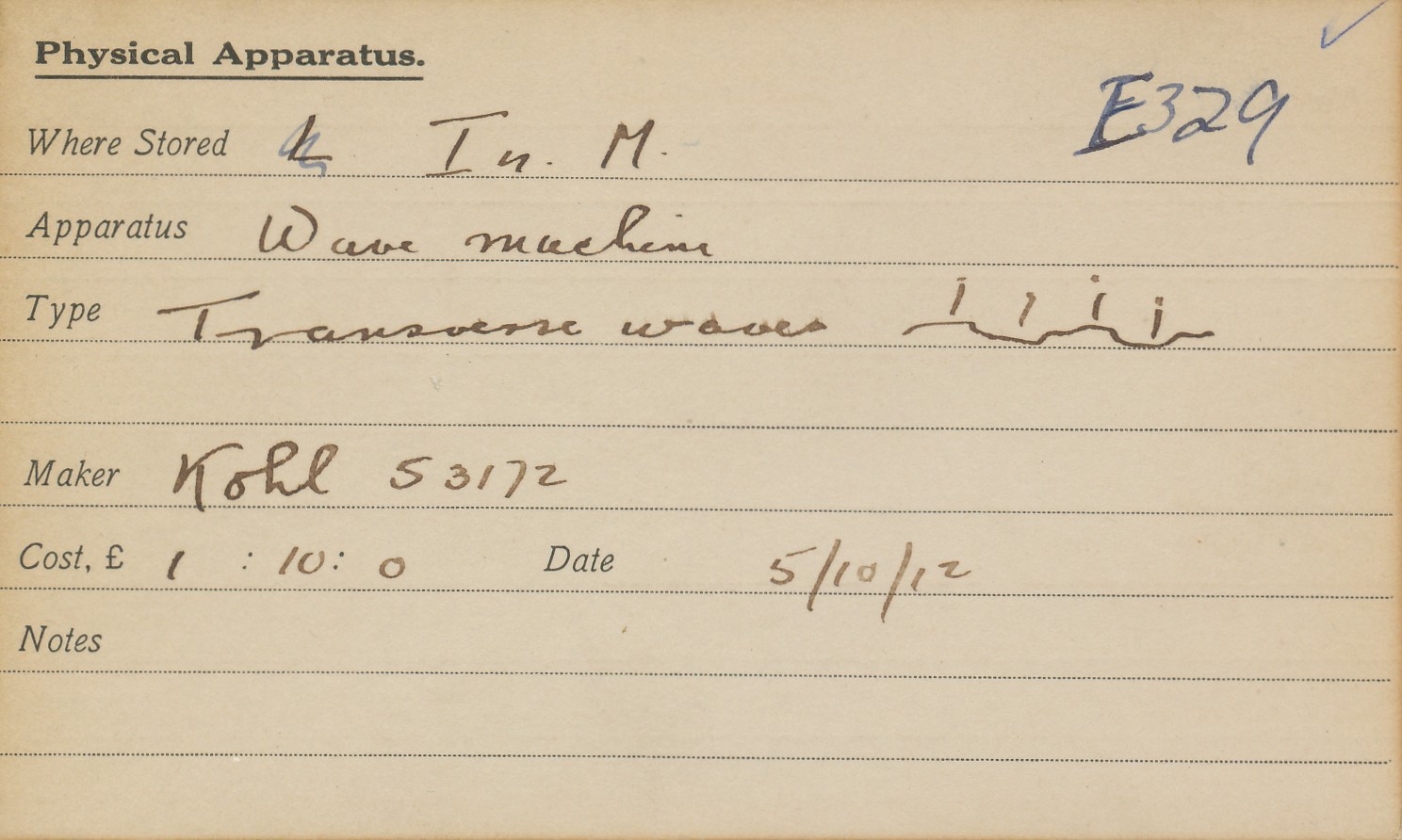This item is a Wave Propagation Demonstration Apparatus and can be used to visualise an important step in our understanding of light.
Previously on this tour we have looked at the Searchlight mirror, the Premo Half Plate Camera and the Galileo Replica Telescope. These three items can be explained by the ballistic model of light. However this model could not account for some of the observed properties of light, such the interference pattern that is formed by light reflecting off a spherical surface and a touching flat surface, called Newton’s rings.
In the early 19th century the ballistic model was overtaken by an alternative model, the wave model of light. The idea that light might be a wave had been around for some time. Huyghens had developed a wave theory during the 1650’s, however the ballistic model was more popular. In 1801 an English physician and physicist, Thomas Young, showed that an interference pattern could be produced when light from the same source was shone through two slits. This provided experimental proof that light could interact with itself like a wave, contrary to the ballistic model and over time the ballistic model was largely abandoned.
Instead physicists believed that light was a transverse wave that moved through a medium, similar to sound moving through air. This concept is represented visually by the Wave propagation Demonstration Apparatus. When the crank is turned the vertical rods are driven by a shaped drive shaft and move up and down. Their motion forms a sine wave that moves horizontally along the line of rods. The phenomenon of polarisation implies that light is a transverse wave too.
While this new model explained interference phenomena, it required a medium for the light to move through. This invisible medium that permeated all space was called the aether and was the subject of much investigation during the 19th and early 20th centuries. In 1901 Lord Kelvin wrote a lengthy paper on the aether and its properties. It was clear that light was able to move very fast which suggested that the aether was a hard material, however other objects moved through it as if it was a fluid. Kelvin suggested that the aether might be analogous to pitch. A percussive wave, caused by a hammer blow, can move through the pitch quickly and the pitch will act as a solid, however pitch acts as a liquid to slow moving objects. He demonstrated this by pouring hot pitch over light corks and placing coins on top. Over time the corks and coins changed places, moving through the pitch as if it was fluid.
This item is part of the UQ Physics Museum ‘2015, International Year of Light’ Tour
< Previous Item | Return to Tour Menu | Next Item >
JDB, SN
